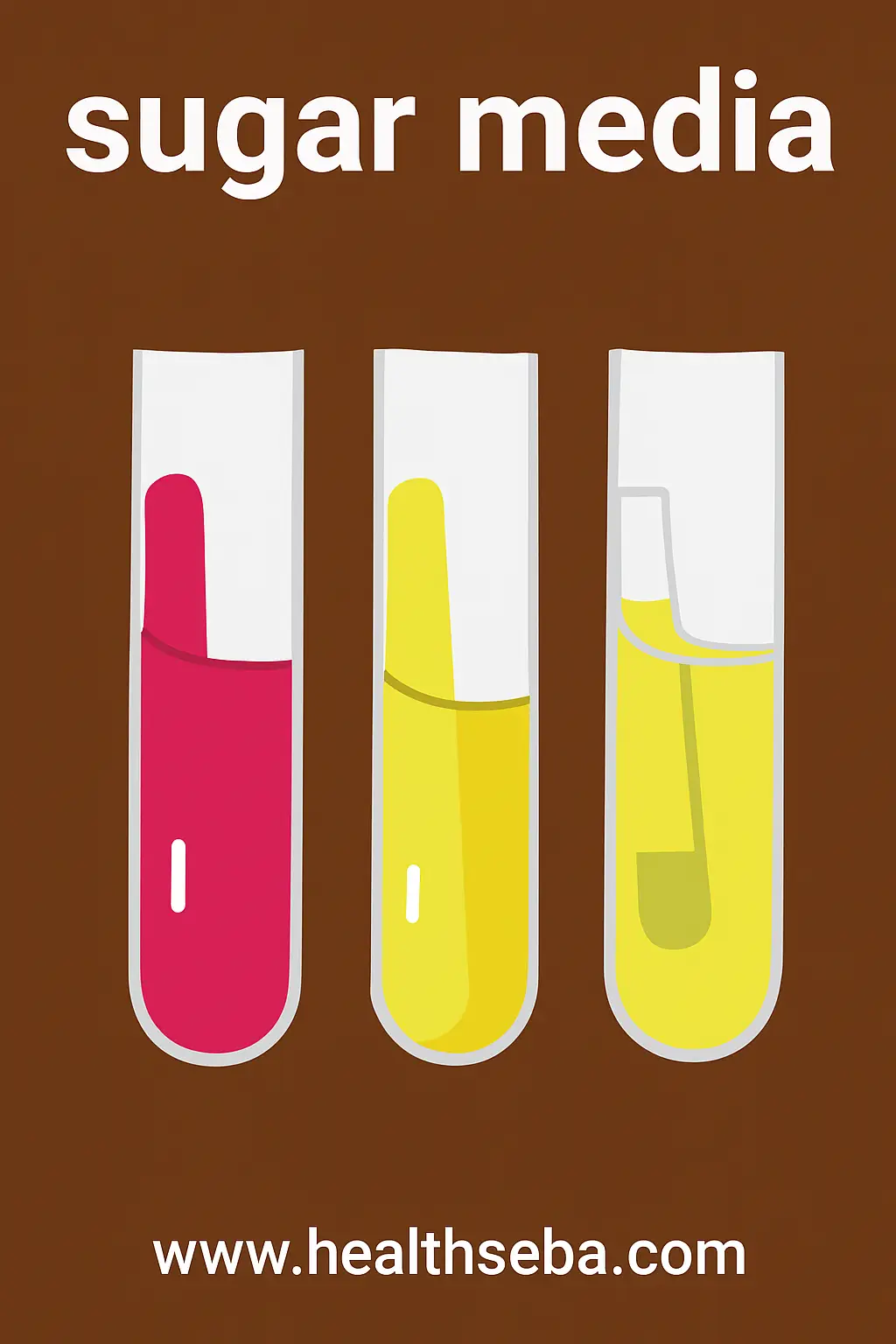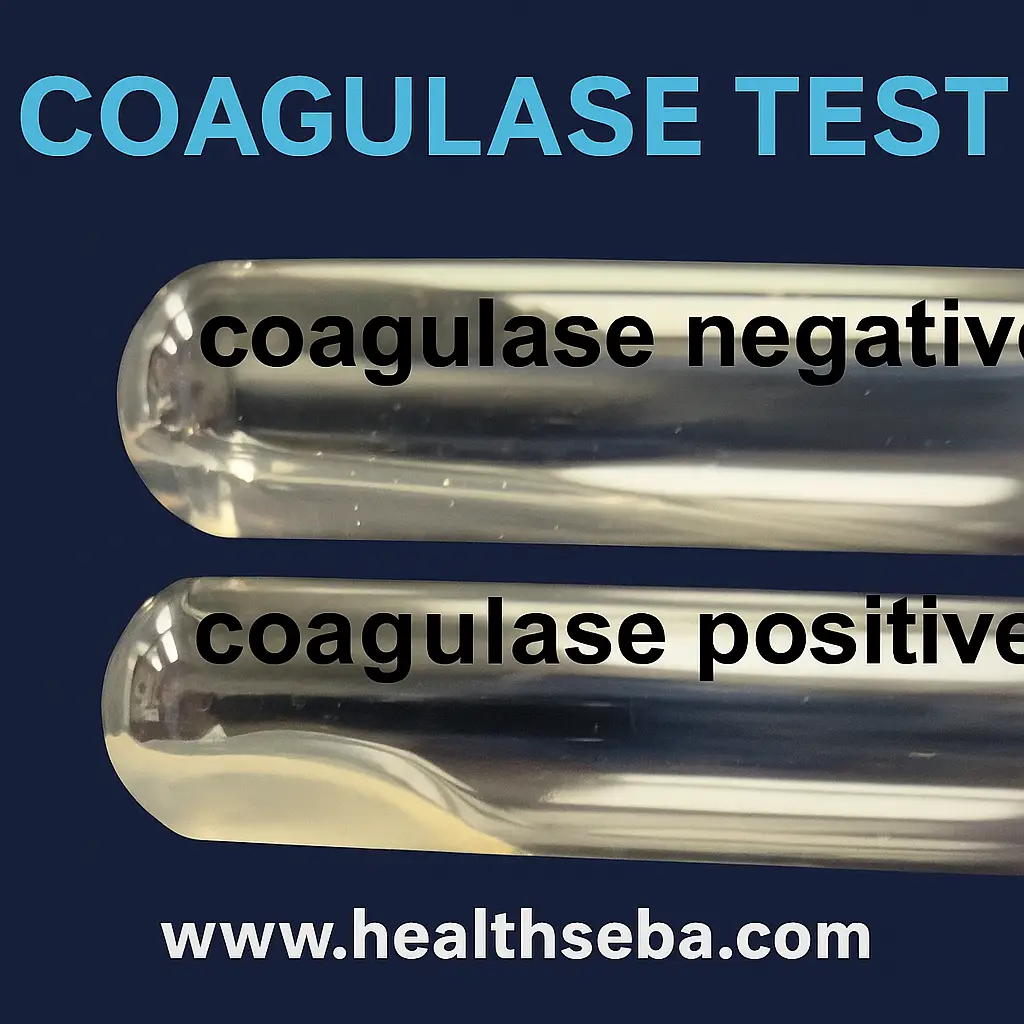Introduction
The sugar fermentation test is a fundamental biochemical test in microbiology used to determine whether bacteria can ferment a given carbohydrate (sugar) with the production of acid, gas, or both. This test is commonly performed with sugars like glucose, lactose, sucrose, mannitol, maltose, etc., and helps in the identification and differentiation of bacteria.
Principle
Bacteria are inoculated into a broth medium containing:
A specific sugar (e.g., glucose, lactose).
Peptone (as nitrogen source).
Phenol red (pH indicator).
Durham’s tube (inverted tube to detect gas production).
If the bacteria ferment the sugar → acid is produced → pH drops → medium changes from red to yellow.
If gas is produced → bubbles appear in Durham’s tube.
If bacteria cannot ferment the sugar → medium remains red or turns deep pink (alkaline due to protein utilization).
Procedure
Prepare sugar fermentation broth (peptone water + sugar + phenol red indicator) and place a Durham’s tube inverted inside.
Inoculate the broth with a pure bacterial culture.
Incubate at 37°C for 24–48 hours.
Observe for color change and gas formation.
Interpretation
| Result | Observation | Interpretation |
|---|---|---|
| Acid production | Medium turns yellow | Sugar fermented, acid produced |
| Acid + Gas production | Yellow medium + bubble in Durham tube | Sugar fermented with gas production |
| No fermentation | Medium remains red | Sugar not fermented |
| Alkaline reaction | Medium turns deep pink | Sugar not used, peptone utilized → ammonia produced |
Examples of Bacterial Reactions
Glucose fermentation: E. coli, Klebsiella, Enterobacter.
Lactose fermentation: E. coli, Klebsiella (positive); Salmonella, Shigella (negative).
Sucrose fermentation: Vibrio cholerae (positive), Vibrio parahaemolyticus (negative).
Mannitol fermentation: Staphylococcus aureus (positive), Staphylococcus epidermidis (negative).
Uses of Sugar Fermentation Test
Differentiation of Enterobacteriaceae members (e.g., E. coli vs Salmonella).
Identification of non-fermenters (e.g., Pseudomonas).
Useful in differentiating Gram-negative bacilli in diagnostic microbiology.
Helps in Vibrio identification (e.g., sucrose fermentation on TCBS agar).
Differentiates Staphylococcus aureus (mannitol fermenter) from other staphylococci.
Conclusion
The sugar fermentation test is one of the most important biochemical tests in microbiology. By detecting acid and gas production, it provides valuable information for bacterial identification and differentiation, especially among Enterobacteriaceae, Vibrio, and Staphylococcus species.
Related Posts

Sugar Media Composition Preparation Uses
Introduction Sugar media are specialized differential culture media used in…
